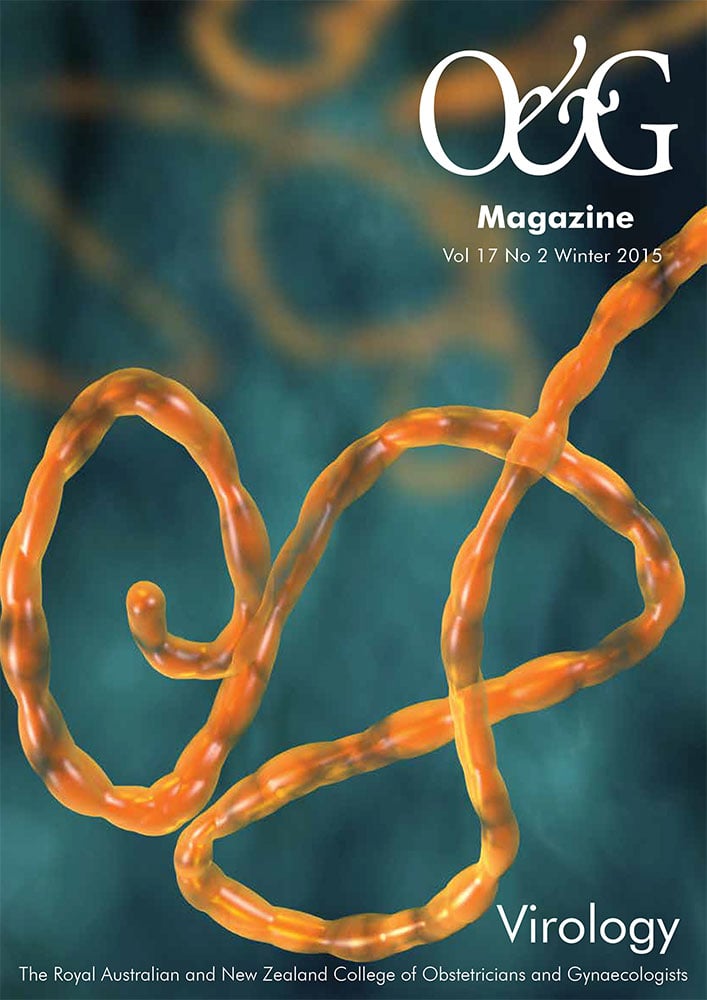Had time to read the latest journals? Catch up on some recent O and G research by reading these mini-reviews by Dr Brett Daniels.
Non-invasive prenatal testing
The discovery of cell-free fetal DNA in maternal blood, in 1997, eventually led to the commercial non-invasive prenatal testing (NIPT) services available today. Initially seen as expensive and specialised, NIPT has fallen rapidly in cost and has become widely adopted for the prenatal detection of fetal aneuploidies. For example, in my private practice, the out-of-pocket cost of NIPT testing fell rapidly from $1500 at introduction to less than $600 at the time of writing.
Warsof et al review the impact of NIPT testing on prenatal screening and on the performance of invasive diagnostic procedures, such as chorionic villus sampling (CVS) and amniocentesis.1 In terms of the rapid adoption of NIPT, the authors cite a 2011 study by Sayres et al that reported only 29 per cent of clinicians thought they would be using NIPT in their practice within five years. A study two years later reported that more than 90 per cent of fetal maternal medicine specialists were using NIPT in their clinical practice. Warsof et al report patients most value NIPT for the decreased risk of miscarriage compared to invasive testing, while doctors report greater accuracy compared to other screening tests as NIPT’s most valuable feature.
It was expected the introduction of NIPT would reduce the number of other first trimester screening tests performed, particularly in high-risk women. Warsof et al confirm this, reporting that in high-risk women in the US, the rate of first trimester combined screening decreased by 50 per cent in the first year after the introduction of NIPT. A major impact of the introduction of NIPT has been a dramatic reduction in the number of invasive prenatal tests, such as amniocentesis and CVS. The review examines a number of studies, showing there was a large decrease in invasive testing following the introduction of NIPT, ranging from about 30–90 per cent. The reduction in the number of invasive tests is attractive to both doctors and patients, particularly with the concomitant reduction in procedure-related miscarriages. However, it should be noted NIPT is still considered a screening tool and requires confirmation with diagnostic testing. An unintended consequence of the reduction in the number of diagnostic tests performed is that individual practitioners may not have sufficient case numbers to maintain optimum skills and, therefore, testing may eventually be restricted to a small number of specialist centres. While NIPT testing has so far been recommended for pregnancies at high risk of genetic problems, the rapid adoption and falling costs of the testing may well mean that it is applied to low-risk women in the future.
- Warsof SL, Larion S, et al. Overview of the Impact of Noninvasive Prenatal Testing on Diagnostic Procedures. Prenatal Diagnosis. 2015, DOI: 10.1002/pd.4601.
Postmenopausal urogenital symptoms
Following menopause, reduced oestrogen results in many women experiencing urogenital symptoms, including vaginal dryness, irritation, dyspareunia, overactive bladder and recurrent urinary tract infections. The terms currently used for this syndrome include atrophic vaginitis and vulvovaginal atrophy. However, these terms are thought by some to be inadequate; descriptive of the postmenopausal vulva and vagina without mentioning symptoms and with the term ‘atrophy’ having negative connotations for many women. A recent paper by the International Society for the Study of Women’s Sexual Health (ISSWSH) and the North American Menopause Society (NAMS) reports the result of a consensus meeting that arrived at the new term of genitourinary syndrome of menopause (GSM). GSM includes the symptoms of genital dryness, decreased lubrication with sexual activity, dyspareunia, postcoital bleeding, decreased arousal, orgasm and desire, irritation/burning/itching of vulva or vagina, dysuria, urinary frequency and urgency. It also includes the signs of decreased vaginal elasticity and moisture, resorption of the labia minora, pallor and erythema, loss of vaginal rugae, prominence of the urethral meatus, introital retraction and recurrent urinary tract infections.1
The mainstay of treatment of GSM is topical vaginal oestrogen. Vaginal oestrogen creams or pessaries are well-tolerated, safe treatments that provide symptom relief to many women. Some women, however, find topical oestrogen difficult and/or unpleasant to use and may have concerns about cancer risk, although this concern is generally thought to be unfounded. For these women, alternative treatments may be desirable. Wurz et al describe the results for a new selective oestrogen receptor modulator (SERM), ospemifene, for the treatment of postmenopausal dyspareunia. Ospemifene exerts a strong oestrogen agonist effect on the vaginal epithelium with Phase III clinical trials showing that oral ospemifene significantly improved the vaginal maturation index and self-reported symptoms of dyspareunia and vaginal dryness compared to placebo. Long-term safety studies revealed that 60mg ospemifene given daily for 52 weeks was well tolerated and was not associated with any endometrial or breast-related safety concerns.2 Ospemifene is not yet available in Australia or New Zealand, but lobbying for its introduction is currently underway, particularly among survivors of breast cancer, in whom topical oestrogen may be a concern.
- Portman, DJ & Gass, MLS. Genitourinary syndrome of menopause: new terminology for vulvovaginal atrophy from the International Society for the Study of Women’s Sexual Health and The North American Menopause Society. Menopause. 2014: 21, 1-6.
- Wurz, GT, Kao, C, et al. Safety and efficacy of ospemifene for the treatment of dyspareunia associated with vulvar and vaginal atrophy due to menopause. Clinical Interventions in Aging. 2014:9, 1939-1950.





Leave a Reply